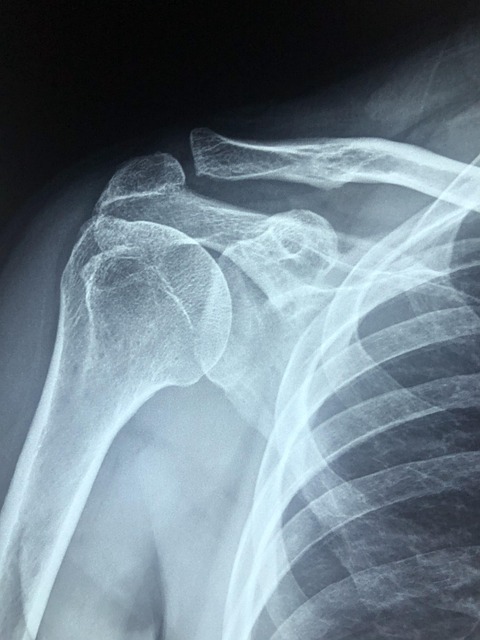Bursitis and tendonitis are joint conditions causing pain from overuse or injury, leading to tenderness, swelling, and stiffness. Steroid injections deliver corticosteroids directly to reduce inflammation rapidly for faster recovery. While effective, they carry risks like infection, tendon rupture, and joint deformity. Non-invasive alternatives include platelet-rich plasma (PRP), physical therapy, acupuncture, and chiropractic adjustments for safe pain relief without steroid risks.
“Bursitis and tendonitis, common conditions causing joint pain and inflammation, can be effectively managed with corticosteroids. This article explores these treatments in detail. We begin by understanding the causes and symptoms of these conditions, providing a clear roadmap for readers. Next, we delve into how corticosteroids act to reduce joint inflammation, highlighting their role as powerful allies in relief.
The focus then shifts to steroid injections—their procedure, immediate benefits, and potential risks. Finally, we present non-invasive alternatives, offering diverse options for managing joint inflammation without surgery.”
Understanding Bursitis and Tendonitis: Causes and Symptoms
Bursitis and tendonitis are common conditions affecting the joints, causing pain and discomfort. Bursitis refers to the inflammation of a bursa, small fluid-filled sacs that act as cushions between bones and tissues, typically near joints. Tendonitis, on the other hand, involves the irritation and swelling of tendons, the thick bands of tissue connecting muscles to bones.
These conditions often arise from various factors such as overuse, repetitive motions, injury, or arthritis. Symptoms include localized pain, tenderness, swelling, and stiffness in the affected area. For example, bursitis near the knee might result in pain and a swollen bursa, while tendonitis in the elbow can cause discomfort and difficulty bending the arm. Steroid injections for joint inflammation have emerged as an effective treatment option, offering rapid relief by reducing swelling and inflammation, thus aiding in faster recovery.
The Role of Corticosteroids in Treating Joint Inflammation
Corticosteroids play a significant role in managing joint inflammation, including conditions like bursitis and tendonitis. These powerful anti-inflammatory drugs work by reducing the body’s production of certain chemicals that cause swelling and pain. In the context of steroid injections for joint inflammation, healthcare providers often inject corticosteroids directly into the affected area to deliver a high concentration of the drug. This targeted approach can provide rapid relief, reducing redness, tenderness, and warmth associated with acute inflammation.
For chronic or recurrent cases where symptoms persist, steroid injections may be administered more frequently, offering a more sustained anti-inflammatory effect. This method is particularly beneficial when other treatments haven’t been effective or to prepare joints for surgical procedures. By minimizing inflammation, corticosteroids help restore joint function and mobility, enabling individuals to resume their regular activities with less discomfort.
Steroid Injections: Procedure, Benefits, and Risks
Steroid injections have emerged as a valuable tool in managing bursitis and tendonitis, offering targeted relief for joint inflammation. The procedure involves inserting a small needle into the affected area, delivering corticosteroids directly to the source of pain. This direct approach ensures that anti-inflammatory medications are concentrated in the damaged tissues, potentially reducing pain and swelling more effectively than oral medications.
The benefits of steroid injections for joint inflammation are significant. They can provide rapid pain relief, often enabling patients to regain mobility and perform daily activities with reduced discomfort. Moreover, these injections may delay or even prevent the need for surgical intervention. However, as with any medical procedure, there are risks associated with steroid injections. Potential side effects include infection, tendon rupture, and joint deformity, although these are relatively rare. Proper technique and sterile conditions during the injection significantly minimize these risks.
Non-Invasive Alternatives to Steroid Injections for Bursitis and Tendonitis
While steroid injections are a common treatment for bursitis and tendonitis, offering swift relief from pain and inflammation, there’s a growing interest in non-invasive alternatives. These options aim to treat joint inflammation without the risks or side effects sometimes associated with steroids. Techniques such as platelet-rich plasma (PRP) therapy, where a patient’s own blood is used to stimulate healing, have shown promising results.
Physical therapy, including targeted exercises and gentle stretching, can also be effective in managing these conditions. Additionally, alternative therapies like acupuncture and chiropractic adjustments may provide relief for some individuals. These non-invasive methods not only offer pain reduction but also focus on strengthening the affected areas, promoting long-term healing, and improving overall joint health.
Corticosteroids have proven effective in managing bursitis and tendonitis by reducing joint inflammation. While steroid injections offer swift relief, they carry potential risks. As an alternative, non-invasive treatments are gaining traction, providing patients with more options to alleviate symptoms without invasive procedures. Understanding these conditions and the available treatment modalities empowers individuals to make informed decisions regarding their care, ultimately facilitating a faster road to recovery and improved quality of life.
